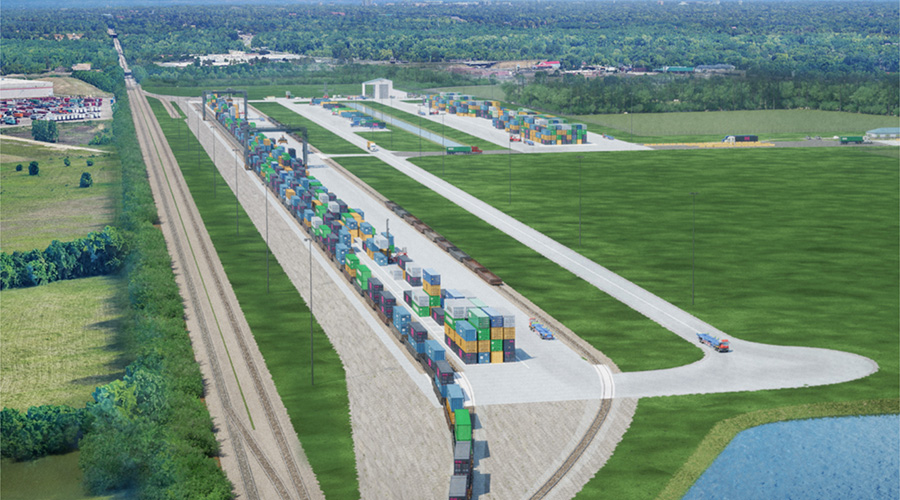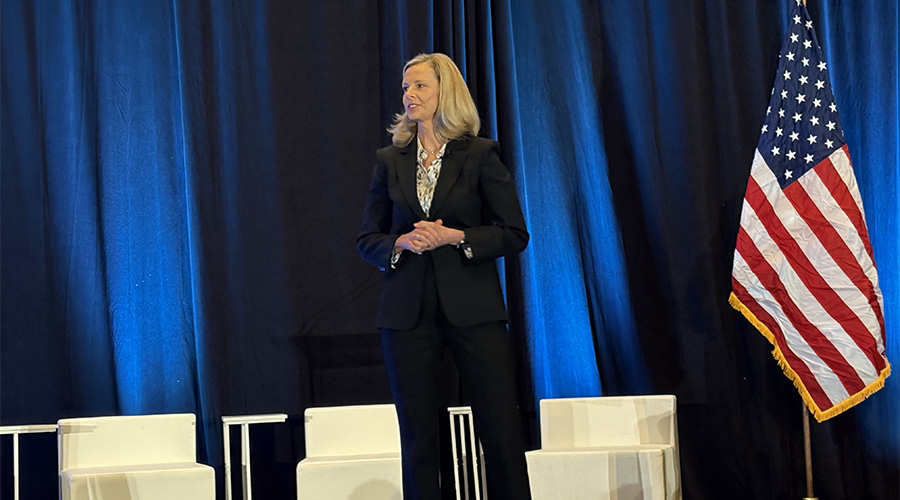UP’s chief operations officer: Railroad remains in service recovery, hiring mode
7/22/2022
By Jeff Stagl, Managing Editor
Similar to its Class Is counterparts, Union Pacific Railroad has had a difficult time this year with service performance and transportation workforce staffing. The good news is the railroad is posting progress on both fronts, said UP Executive Vice President of Operations Eric Gehringer during his luncheon keynote address July 19 at the Midwest Association of Rail Shippers summer meeting in Lake Geneva, Wisconsin.
The Class I has reduced recrews and unproductive train starts, boosted the locomotive fleet, modified transportation plans and trimmed the rail-car inventory on its network to help service recovery efforts and restore fluidity, he said.
The three metrics UP leaders monitor closely to gauge performance are operating inventory, volume and freight-car velocity. Those best reveal the status of network recovery, Gehringer said.
“We focus on car velocity, which is the single-most important metric,” he said.
In the second quarter, car velocity (as measured by daily miles per car) dropped to 187 from 213 in second-quarter 2021 as UP worked to reduce its operating car inventory. The car velocity goal is an average of 206 to 210 miles per day.
Since Jan. 1, the Class I has added 150 locomotives to its fleet, increased asset utilization, maximized train lengths, replanned train routing to relocate car inventory and bypassed a number of terminals to help boost velocity. UP also has worked with customers to reduce the number of privately-owned cars on its network, said Gehringer. Since mid-April, 3,000 of those cars were removed from the system.
“We looked at our own fleet, too, and pulled cars out,” he said. “We’re now very thoughtful about putting cars back into the system.”
In addition, the railroad continues to make key capital investments aimed at increasing capacity and improving fluidity. Capital spending year to date is up 38% compared with 2021’s level, reflecting a more normalized spend trajectory and a larger 2022 capex budget.
About three-fourths of this year’s budget targets mainline operation improvements — including double track, siding projects and centralized traffic control— while 64% targets core routes and 35% targets the largest routes, Gehringer said.
“But you can’t invest yourself to reliability alone,” he said.
 Gehringer talked about UP’s plan to hire 1,400 more transportation employees this year, then another 500 to 800 in first-half 2023. Jeff Stagl
Gehringer talked about UP’s plan to hire 1,400 more transportation employees this year, then another 500 to 800 in first-half 2023. Jeff Stagl That’s where a well-staffed and productive workforce comes in. This year, UP plans to hire 1,400 more transportation employees. Then, in first-half 2023, the railroad expects to hire another 500 to 800.
The latest new graduate pipeline of train and engine-service workers (as of late July) shows 540 recruits are in training, 402 are about to enter training and 411 had graduated.
To improve recruiting and retention, UP has cut bureaucracy from the hiring process, modified sourcing and training, and added an online application process, said Gehringer.
“Now people can go online at 5 p.m. or at midnight to apply,” he said.
UP also changed its approach to landing recruits in smaller cities, such as Boone, Iowa.
“The hiring market has been difficult in the past in small markets,” Gehringer said.
Another service-performance factor under close watch that’s tied heavily to labor: crew availability. On any given day, about 13% to 17% of train crews are unavailable because of vacations, home life issues or other reasons, said Gehringer.
The railroad just navigated through a difficult crew availability stretch that included the third and fourth most impactful holidays: Father’s Day and July 4th. The most impactful are Thanksgiving and Christmas.
Since Thanksgiving is about four months away, the railroad should be able to take advantage of higher crew availability in the near term, Gehringer believes.
“This is an opportunity to use more crews since we’re past some big holidays,” he said.


